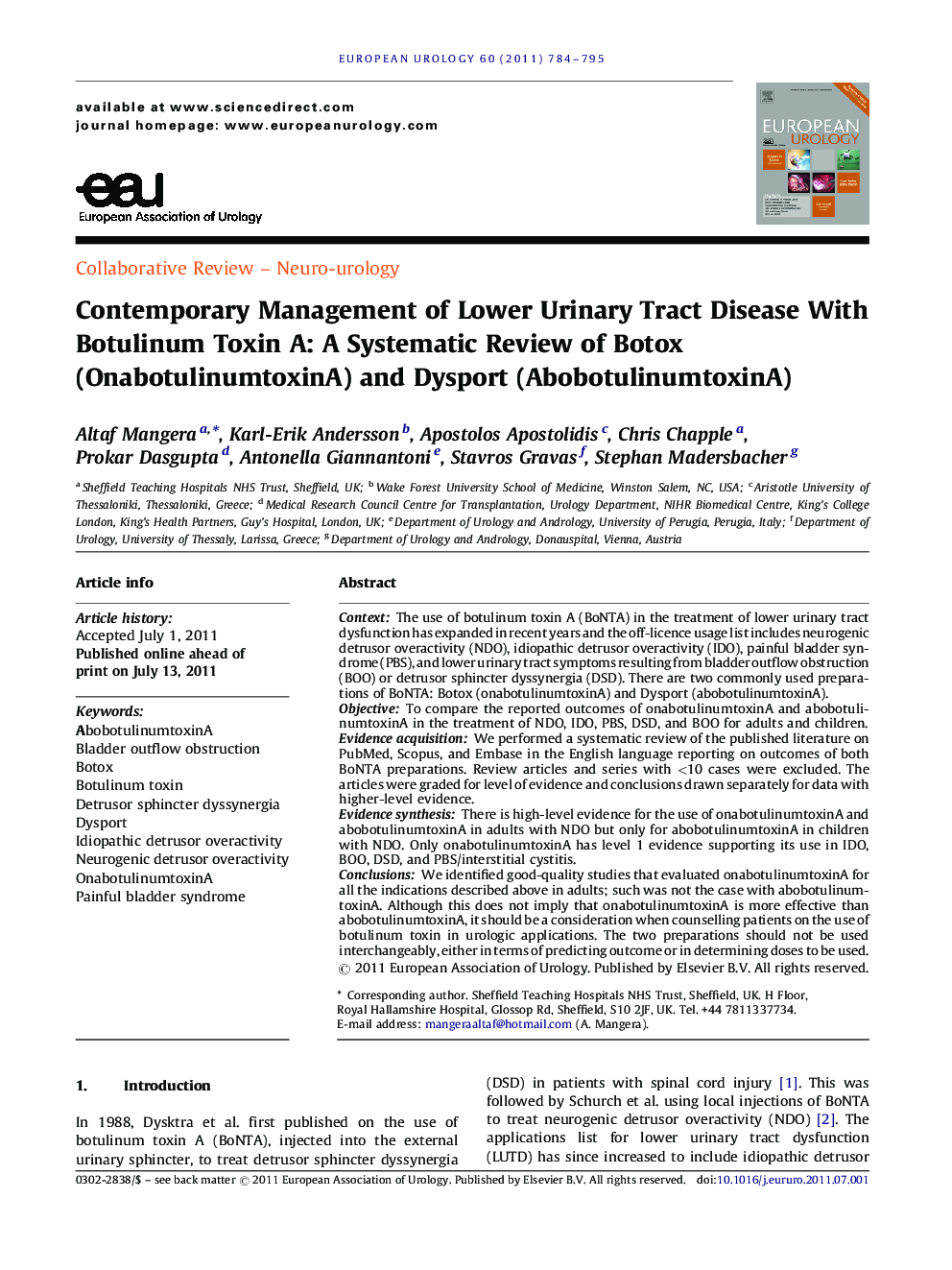| کد مقاله | کد نشریه | سال انتشار | مقاله انگلیسی | نسخه تمام متن |
|---|---|---|---|---|
| 3924272 | 1253098 | 2011 | 12 صفحه PDF | دانلود رایگان |

ContextThe use of botulinum toxin A (BoNTA) in the treatment of lower urinary tract dysfunction has expanded in recent years and the off-licence usage list includes neurogenic detrusor overactivity (NDO), idiopathic detrusor overactivity (IDO), painful bladder syndrome (PBS), and lower urinary tract symptoms resulting from bladder outflow obstruction (BOO) or detrusor sphincter dyssynergia (DSD). There are two commonly used preparations of BoNTA: Botox (onabotulinumtoxinA) and Dysport (abobotulinumtoxinA).ObjectiveTo compare the reported outcomes of onabotulinumtoxinA and abobotulinumtoxinA in the treatment of NDO, IDO, PBS, DSD, and BOO for adults and children.Evidence acquisitionWe performed a systematic review of the published literature on PubMed, Scopus, and Embase in the English language reporting on outcomes of both BoNTA preparations. Review articles and series with <10 cases were excluded. The articles were graded for level of evidence and conclusions drawn separately for data with higher-level evidence.Evidence synthesisThere is high-level evidence for the use of onabotulinumtoxinA and abobotulinumtoxinA in adults with NDO but only for abobotulinumtoxinA in children with NDO. Only onabotulinumtoxinA has level 1 evidence supporting its use in IDO, BOO, DSD, and PBS/interstitial cystitis.ConclusionsWe identified good-quality studies that evaluated onabotulinumtoxinA for all the indications described above in adults; such was not the case with abobotulinumtoxinA. Although this does not imply that onabotulinumtoxinA is more effective than abobotulinumtoxinA, it should be a consideration when counselling patients on the use of botulinum toxin in urologic applications. The two preparations should not be used interchangeably, either in terms of predicting outcome or in determining doses to be used.
Journal: European Urology - Volume 60, Issue 4, October 2011, Pages 784–795